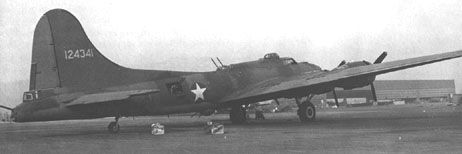Boeing/Lockheed-Vega
YB-40 Flying Fortress


(illustration by Rikyu Watanabe)


The YB-40 was a derivation of the Boeing B-17, in which additional guns were added in hopes that these heavily-armed B-17s would be able to "escort" the other bombers, protecting them from enemy fighter attacks when beyond the range of friendly fighter escort. Lockheed-Vega had the task of doing the conversion work on the Boeing B-17s, but only twenty YB-40s were made, as well as four training models known as the TB-40. Changes included a remotely-controlled chin turret (which later became standard on the B-17G model), twin .50 caliber guns in the waist positions (instead of the single guns), an extra twin gun power turret behind what used to be the radio operator's gun position, and sometimes extra cheek guns in the nose. The bombs and bombardier were left behind, and extra ammo for the guns was carried. Even with the reduction in weight without the bombs, the added weight of guns and ammo made the aircraft heavier and slower. As a result, once the other bombers had released their bombloads, the YB-40s were outpaced by their lighter brethren, and so failed in their role as escorts. The program was made obsolete not only by its own failures, but by the appearance of long-range fighter escorts that could fill the role much more ably.
For more data on this aircraft, click
here for Joe Baugher's
webpage.
USAF archives on this aircraft, click
here.
Additional information on this aircraft
can be found at Wikipedia
here.
(updated February 2009)
Boeing/Lockheed-Vega YB-40 Flying Fortress
Type: bomber escort
Crew: 9
Armament: from 14 to 30 fifty caliber machine guns
(various configurations were tested)
Specifications:
Length: 74' 9"
Height: 19' 1"
Wingspan: 103' 9"
Max Gross Weight: 63,500 lb
Propulsion:
No. of Engines: 4
Powerplant: Wright R-1820-65 Cyclone
Horsepower: 1200 hp each
Performance:
Range: 2,260 miles
Cruise Speed: 196 mph
Max Speed: 292 mph at 25,000 ft.
Ceiling: 29,200 ft
If this page does not have a navigational frame on the left, click HERE to see the rest of the website.